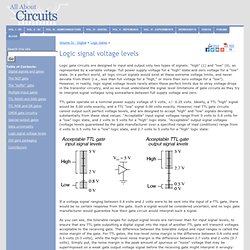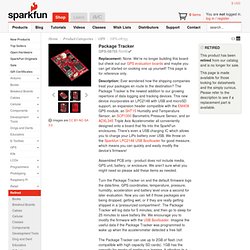

Xbee. Robot Car Intersections Are Terrifyingly Efficient. Last time we put our life in the hands of a robot car, it managed to park itself without crashing or abducting us.

Robot cars also know how to drive like maniacs, and even how to powerslide. These are all very neat tricks -- tricks that might save your life one day. But what's going to happen when all cars are this talented? Efficiency. Scary, scary efficiency. It's not just the sensor-driven skills that will soon be common to individual cars that will shape the future of automotive transportation, but also the ability for cars to communicate with each other, sharing constant updates about exactly where they are and where they're going. Seriously, just watching this simulation (which comes from Peter Stone, a computer scientist at the University of Texas at Austin) makes me more than a little nervous.
So, how close are we to something like this? Via [ The Atlantic ] Logic signal voltage levels : LOGIC GATES. Logic gate circuits are designed to input and output only two types of signals: "high" (1) and "low" (0), as represented by a variable voltage: full power supply voltage for a "high" state and zero voltage for a "low" state.

In a perfect world, all logic circuit signals would exist at these extreme voltage limits, and never deviate from them (i.e., less than full voltage for a "high," or more than zero voltage for a "low"). However, in reality, logic signal voltage levels rarely attain these perfect limits due to stray voltage drops in the transistor circuitry, and so we must understand the signal level limitations of gate circuits as they try to interpret signal voltages lying somewhere between full supply voltage and zero. TTL gates operate on a nominal power supply voltage of 5 volts, +/- 0.25 volts. Ideally, a TTL "high" signal would be 5.00 volts exactly, and a TTL "low" signal 0.00 volts exactly. CMOS noise margins widen even further with higher operating voltages. Related Links. Package Tracker.
Replacement: None.

We're no longer building this board but check out our GPS evaluation boards and maybe you can get started on cooking one up yourself! This page is for reference only. Description: Ever wondered how the shipping companies treat your packages en route to the destination? The Package Tracker is the newest addition to our growing repertoire of data logging and tracking devices. This new device incorporates an LPC2148 with USB and microSD support, an expansion header compatible with the EM408 GPS module, an SHT15 Humidity and Temperature Sensor, an SCP1000 Barometric Pressure Sensor, and an ADXL345 Triple Axis Accelerometer all conveniently designed onto a board that fits into the SparkFun enclosures.
Assembled PCB only - product does not include media, GPS unit, battery, or enclosure. Turn the Package Tracker on and the default firmware logs the date/time, GPS coordinates, temperature, pressure, humidity, acceleration and battery level once a second for later evaluation. Meet the New World's Fastest Micromouse Robot. One year ago, we got super excited when a micromouse managed to negotiate a maze in under five seconds.

At the 2011 All Japan Micromouse Robot Competition in Tsukuba, the micromouse pictured above shaved an entire second off of that time, completing the maze in a scant 3.921 seconds. That's fast. This robot, called Min7.1, was designed by Ng Beng Kiat. It has a top speed of just over 12 kph, which is wicked quick for something that's 10 cm long and weighs only 90 grams. Of course, the micromouse has to figure out where it's going before it can put the hammer down and blaze through on its final run, which is why it first gets an autonomous exploration phase: If we continue the trend, next year we'll have a three second robot, followed by a two second robot, and by 2016 or so, robots will be blowing through mazes before we even ask them to. [ Ng Beng Kiat ] via [ Robots Dreams ]
Spherical Flying Machine Developed by Japan Ministry Of Defense #DigInfo.